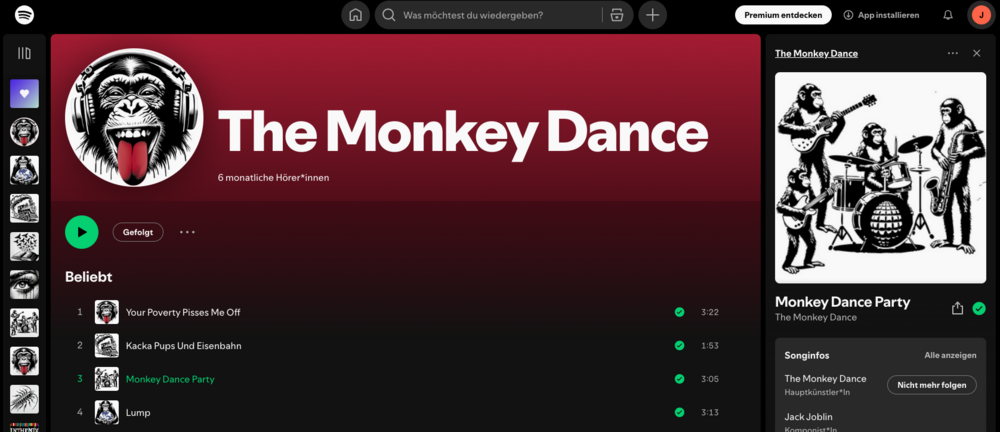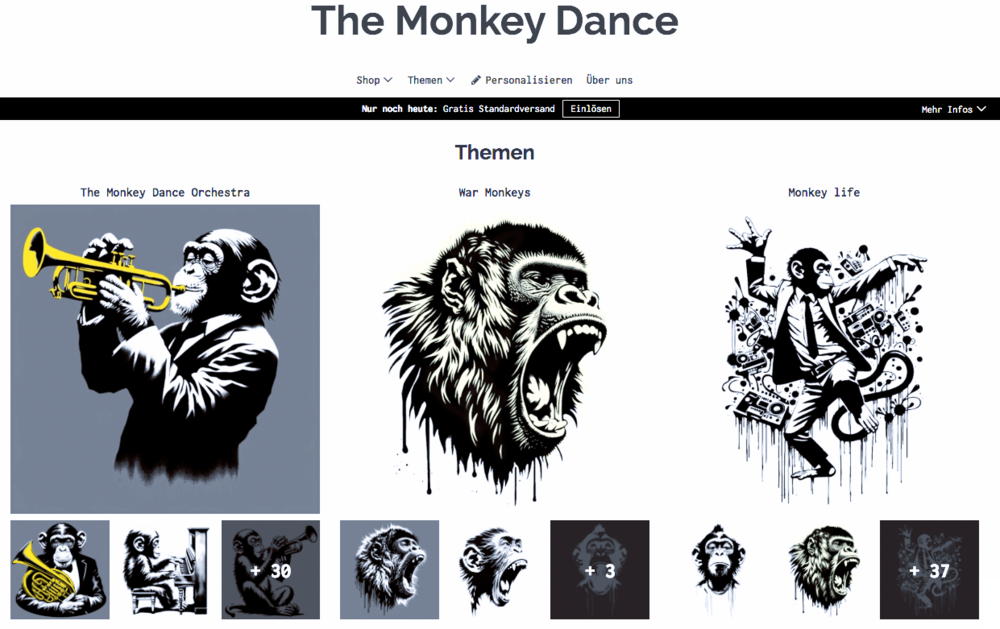Wo sind Grindwale sesshaft?


Wo sind Grindwale sesshaft?
Einleitung
Der Grindwal, auch bekannt als Langflossen-Grindwal, ist ein faszinierendes und soziales Meeressäugetier. Dieser MOOC bietet eine umfassende Erkundung seines Lebensraums, seiner Verhaltensweisen und seines Schutzstatus. Er behandelt Migrationsmuster, soziale Strukturen und die Wechselwirkungen mit ihrer Umwelt und ist damit eine wertvolle Ressource für Schulen und Forscher.
Grindwale sind in den Weltmeeren verbreitet und haben einzigartige Merkmale und Verhaltensweisen, die sie von anderen Cetaceen abheben. Sie spielen eine wichtige Rolle in den marinen Ökosystemen und stehen vor verschiedenen Bedrohungen. Dieser MOOC vermittelt ein tiefes Verständnis für ihre Bedeutung.
Lebensraum und Verbreitung
Grindwale bewohnen vor allem die kälteren Gewässer des Nordatlantiks, insbesondere um Island, die Färöer-Inseln und Norwegen. Sie kommen auch in anderen gemäßigten und subtropischen Gewässern weltweit vor. Ihre Verbreitung wird von der Verfügbarkeit ihrer Beute beeinflusst, darunter Tintenfische und kleine Fische, die einen wesentlichen Teil ihrer Nahrung ausmachen.
Grindwale bilden sogenannte Pods oder soziale Gruppen, die von einigen Individuen bis zu mehreren Hundert reichen können. Diese Gruppierungsverhalten spielt eine wichtige Rolle in ihren Migrationsmustern und sozialen Interaktionen, wodurch sie sich an ihre sich ändernden Umgebungen anpassen können.
Soziale Struktur
Die soziale Struktur der Grindwale ist hoch entwickelt und ähnelt der ihrer nahen Verwandten, der Delfine. Sie leben in Pods, die von einer Matriarchin angeführt werden, und diese Gruppen können mehrere Generationen umfassen. Diese soziale Kohäsion hilft beim Jagen, Navigieren und Kommunizieren.
Die Beziehungen innerhalb dieser Pods sind komplex, und die Individuen weisen einzigartige Kommunikationsmuster auf, darunter Echolokation und Vokalisationen. Diese Methoden ermöglichen es ihnen, ihre Umgebung zu navigieren und miteinander zu interagieren, was eine entscheidende Rolle bei der Erhaltung der Pods spielt.
Schutz und Bedrohungen
Grindwale stehen vor zahlreichen Schutzherausforderungen. Sie sind anfällig für die Jagd, insbesondere auf den Färöer-Inseln, wo traditionelle Jagden, auch als "Grindadráp" bekannt, eine erhebliche Bedrohung darstellen. Zudem gefährden Verschmutzung, Klimawandel und Lebensraumverlust ihre Bestände.
Bemühungen zum Schutz der Grindwale beinhalten internationale Abkommen und Naturschutzorganisationen. Die Arbeit der International Whaling Commission (IWC) und verschiedener NGOs zielt darauf ab, ihre Populationen und Lebensräume zu schützen, das Bewusstsein für die Bedrohungen zu schärfen und nachhaltige Schutzpraktiken zu fördern.
Schlussfolgerung
Der Grindwal ist ein bemerkenswertes Meeressäugetier, das eine entscheidende Rolle in seinem Ökosystem spielt. Seine komplexen sozialen Strukturen, Migrationsmuster und sein Schutzstatus machen ihn zu einem bedeutenden Thema. Ihr Verständnis und Schutz ist essentiell für die Erhaltung mariner Lebensräume weltweit.
Interaktive Aufgaben
Quiz: Teste Dein Wissen
Wo sind Grindwale hauptsächlich zu finden? (Nordatlantischer Ozean) (!Indischer Ozean) (!Mittelmeer) (!Arktischer Ozean)
Memory
| Soziale Gruppe | Pod |
| Migration | Reise |
| Beute | Tintenfisch |
Kreuzworträtsel
| Lebensraum | Wo leben Grindwale hauptsächlich? |
| Pod | Wie nennt man eine Gruppe Grindwale? |
| Tintenfisch | Was ist die Hauptbeute der Grindwale? |
| Grindadráp | Wie nennt man die traditionelle Jagd auf Grindwale? |
| Migration | Was bezeichnet den Prozess der Bewegung von Grindwalen zwischen Lebensräumen? |
Offene Aufgaben
Leicht
- Grindwal Lebensräume: Erforsche die typischen Lebensräume von Grindwalen und ihre Verbreitung weltweit.
- Grindwal Ernährung: Untersuche die Ernährung von Grindwalen und liste ihre Hauptbeute und deren Verfügbarkeit auf.
- Schutz der Grindwale: Recherchiere die Schutzbemühungen für Grindwale und hebe wichtige Organisationen hervor.
Standard
- Pod Dynamik: Untersuche die soziale Struktur der Grindwal-Pods, einschließlich ihrer Interaktionen und Kommunikationsmethoden.
- Migrationsmuster: Studiere die Migrationsmuster von Grindwalen und identifiziere Schlüsselfaktoren, die ihre Bewegungen beeinflussen.
- Bedrohungen für Grindwale: Analysiere die Bedrohungen für Grindwale, einschließlich Jagd, Verschmutzung und Klimawandel.
Schwer
- Kommunikation von Grindwalen: Erforsche die Kommunikationsmethoden der Grindwale, insbesondere Echolokation und Vokalisationen.
- Globaler Schutz: Vergleiche die Schutzbemühungen für Grindwale in verschiedenen Regionen und analysiere ihre Effektivität.
- Zukunftsaussichten: Prognostiziere die Zukunft der Grindwal-Populationen unter Berücksichtigung aktueller Bedrohungen und Schutzbemühungen.


Lernkontrolle
- Auswirkungen auf Ökosysteme: Diskutiere die Auswirkungen der Grindwale auf ihre Ökosysteme, einschließlich ihrer Rolle als Räuber.
- Kulturelle Bedeutung: Untersuche die kulturelle Bedeutung der Grindwale, insbesondere in Regionen mit Jagdtraditionen.
- Schutzstrategien: Analysiere die Effektivität verschiedener Schutzstrategien für Grindwale.
- Populationsdynamik: Bewerte die Populationsdynamik der Grindwale, einschließlich ihrer Reproduktion und Sterblichkeit.
- Marine Biodiversität: Diskutiere, wie Grindwale zur marinen Biodiversität beitragen, unter Berücksichtigung ihrer Interaktionen mit anderen Arten.
Links
Teilen - Diskussion - Bewerten
Schulfach+


aiMOOCs



aiMOOC Projekte


YouTube Music: THE MONKEY DANCE

Spotify: THE MONKEY DANCE

Apple Music: THE MONKEY DANCE

Amazon Music: THE MONKEY DANCE

The Monkey Dance SpreadShirtShop

|
|
|


Children for a better world >> Förderung der AI Fair-Image Challenge
Fair-Image wird von CHILDREN JUGEND HILFT! gefördert und ist mit der deutschlandweiten AI Fair-Image Challenge SIEGERPROJEKT 2025. Alle Infos zur Challenge hier >>. Infos zum Camp25 gibt es hier. Wenn auch Ihr Euch ehrenamtlich engagiert und noch finanzielle Unterstützung für Eurer Projekt braucht, dann stellt gerne einen Antrag bei JUGEND HILFT.


Wo sind Grindwale sesshaft?
Introduction
The long-finned pilot whale, or Grind whale, is one of the most social and enigmatic marine mammals. This MOOC offers a comprehensive exploration into the habitat, behavior, and conservation status of this remarkable creature. It delves into their migratory patterns, social structures, and interactions with their environment, making it a valuable resource for school education and research.
Grind whales, commonly found in the world's oceans, have distinctive features and behaviors that set them apart from other cetaceans. They play a crucial role in marine ecosystems and face numerous conservation challenges. This MOOC provides an in-depth understanding of their significance.
Habitat and Distribution
Grind whales primarily inhabit the colder waters of the North Atlantic Ocean, around regions such as Iceland, the Faroe Islands, and Norway. They are also found in other temperate and subtropical waters worldwide. Their distribution is influenced by the availability of prey, including squids and small fish, which constitute a significant part of their diet.
Grind whales are known to form pods, or social groups, which can range from a few individuals to several hundred. This grouping behavior plays a vital role in their migration patterns and social interactions, allowing them to adapt to their changing environments.
Social Structure
The social structure of grind whales is highly developed and resembles that of dolphins, their close relatives. They live in pods led by a matriarch, and these groups can include multiple generations. This social cohesion aids in hunting, navigation, and communication.
The relationships within these pods are complex, with individuals exhibiting unique communication patterns, such as echolocation and vocalizations. These communication methods enable them to navigate their environments and interact with one another, playing a crucial role in maintaining the integrity of their pods.
Conservation and Threats
Grind whales face numerous conservation challenges. They are susceptible to hunting, particularly in the Faroe Islands, where traditional hunts, or "grindadráp," pose a significant threat. Additionally, pollution, climate change, and habitat loss also endanger their populations.
Efforts to protect grind whales involve international treaties and conservation organizations. The work of the International Whaling Commission (IWC) and various NGOs aims to safeguard their populations and habitats, raising awareness of the threats they face and promoting sustainable conservation practices.
Conclusion
The grind whale, a remarkable marine mammal, plays a vital role in its ecosystem. Its complex social structures, migratory patterns, and conservation status make it a subject of significant interest. Understanding and protecting these creatures is essential for maintaining the health of marine environments worldwide.
Interactive Exercises
Quiz: Test Your Knowledge
Where are grind whales primarily found? (North Atlantic Ocean) (!Indian Ocean) (!Mediterranean Sea) (!Arctic Ocean)
Memory
| Social Group | Pod |
| Migration | Travel |
| Prey | Squid |
Crossword Puzzle
| Habitat | Where do grind whales primarily live? |
| Pod | What is the name for a group of grind whales? |
| Squid | What is the main prey of grind whales? |
| Grindadráp | What is the traditional hunt for grind whales called? |
| Migration | What process involves the movement of grind whales between habitats? |
Open Tasks
Easy
- Grind Whale Habitats: Research the typical habitats of grind whales, focusing on their distribution across the globe.
- Diet of Grind Whales: Explore the diet of grind whales, listing their primary prey and its availability.
- Conservation Efforts: Investigate conservation efforts for grind whales, highlighting key organizations involved.
Standard
- Pod Dynamics: Examine the social structure of grind whale pods, detailing their interactions and communication methods.
- Migration Patterns: Study the migration patterns of grind whales, identifying key factors influencing their movements.
- Threats to Grind Whales: Analyze the threats grind whales face, including hunting, pollution, and climate change.
Hard
- Grind Whale Communication: Explore the communication methods of grind whales, focusing on echolocation and vocalizations.
- Global Conservation: Compare conservation efforts for grind whales in different regions, examining their effectiveness.
- Future Outlook: Predict the future of grind whale populations, considering current threats and conservation efforts.


Learning Assessment
- Ecosystem Impact: Discuss the impact of grind whales on their ecosystems, considering their role as predators.
- Cultural Significance: Examine the cultural significance of grind whales, particularly in regions where hunting traditions persist.
- Conservation Strategies: Analyze the effectiveness of different conservation strategies for grind whales.
- Population Dynamics: Evaluate the population dynamics of grind whales, including their reproduction and mortality rates.
- Marine Biodiversity: Discuss how grind whales contribute to marine biodiversity, considering their interactions with other species.
Links
Share - Discuss - Rate

MUSIC QUIZ










|
|











































